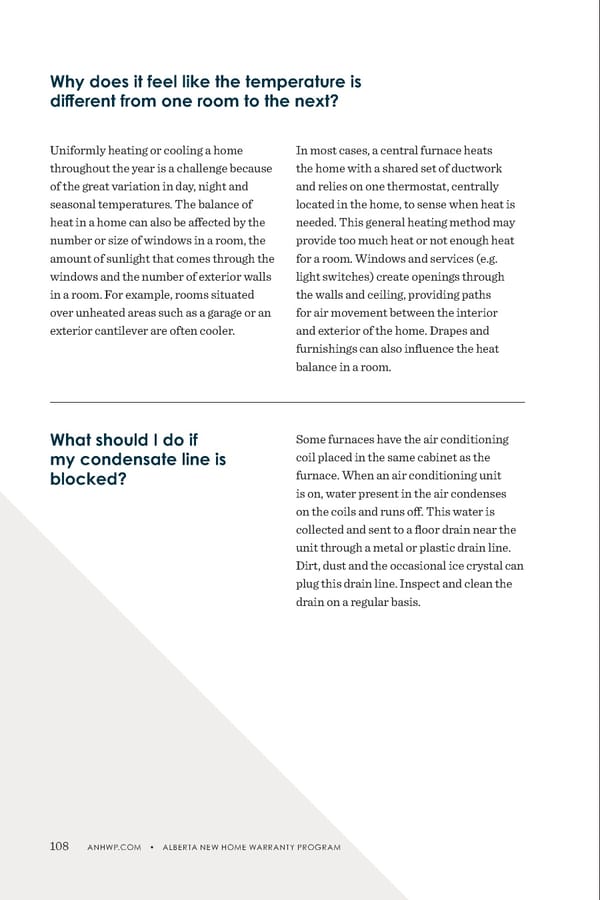Uniformly heating or cooling a home throughout the year is a challenge because of the great variation in day, night and seasonal temperatures. The balance of heat in a home can also be affected by the number or size of windows in a room, the amount of sunlight that comes through the windows and the number of exterior walls in a room. For example, rooms situated over unheated areas such as a garage or an exterior cantilever are often cooler. In most cases, a central furnace heats the home with a shared set of ductwork and relies on one thermostat, centrally located in the home, to sense when heat is needed. This general heating method may provide too much heat or not enough heat for a room. Windows and services (e.g. light switches) create openings through the walls and ceiling, providing paths for air movement between the interior and exterior of the home. Drapes and furnishings can also influence the heat balance in a room. Some furnaces have the air conditioning coil placed in the same cabinet as the furnace. When an air conditioning unit is on, water present in the air condenses on the coils and runs off. This water is collected and sent to a floor drain near the unit through a metal or plastic drain line. Dirt, dust and the occasional ice crystal can plug this drain line. Inspect and clean the drain on a regular basis. Why does it feel like the temperature is different from one room to the next? What should I do if my condensate line is blocked? 108 ANHWP.COM • ALBERTA NEW HOME WARRANTY PROGRAM
 ANHWP Care & Maintenance Guide 2022 Page 109 Page 111
ANHWP Care & Maintenance Guide 2022 Page 109 Page 111